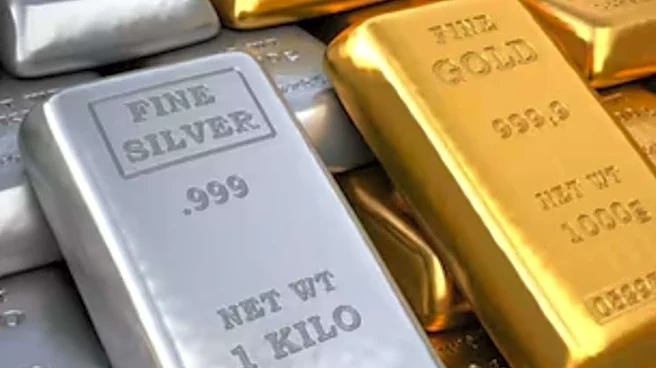Here’s a look at what’s behind the recent dip — and what investors are watching next.
Trade optimism cools safe-haven demand
The biggest factor dragging both gold and silver lower is renewed optimism around a potential US-China trade deal. Top officials from both countries reportedly worked out the framework of an agreement ahead of a possible meeting between US President Donald Trump and Chinese President Xi Jinping this week.
As trade tensions thaw, investors are moving away from defensive assets like bullion towards equities and other riskier investments.
“A de-frosting of US-China trade relations has somewhat pulled the rug out from under the gold price due to a decline in safe-haven buying flows,” said Tim Waterer, Chief Market Analyst at KCM Trade.
Stronger dollar adds pressure
The US dollar has firmed ahead of the Federal Reserve’s policy meeting and amid upbeat earnings from major American companies. A stronger dollar makes precious metals more expensive for buyers using other currencies, dampening global demand.
With global equities rising — Japan’s Nikkei above 50,000, US and European indices at record highs, and oil prices slipping as OPEC plans to boost output — investors are finding fewer reasons to hold non-yielding assets like gold and silver.
“Gold is down 3% back below $4,000 per ounce, silver by 4%,” said Vikram Kasat, Head Advisory, PL Capital.
Central bank policy signals in focus
Traders are closely watching the US Federal Reserve meeting this week, where another interest rate cut is widely expected. Lower rates typically support precious metals, but sentiment around risk assets could offset that effect if investors stay confident about global growth.
The European Central Bank and Bank of Japan are both expected to hold policy steady later this week, offering few surprises.
Domestic market trends in India
In India, gold and silver prices have mirrored global trends.
Gold: 24-karat gold is priced around ₹1.21 lakh per 10 grams, reflecting profit-booking and the impact of a stronger US dollar.
“While gold remains a safe-haven asset, its short-term bias seems guarded. Investors may wait for clearer signals before increasing exposure,” said Aksha Kamboj, Vice President, India Bullion & Jewellers Association (IBJA).
Silver: Prices have eased to ₹1.45 lakh per kilogram, slipping from recent highs. The metal’s dual nature — used both as an industrial input and as a precious asset — means weaker industrial demand and softer investor sentiment have both contributed to the decline.
Kamboj noted that while silver retains long-term upside potential, “a cautious, buy-on-dips strategy” is advisable given its volatility.
Longer-term outlook still resilient
Even with the recent correction, gold has gained about 53% this year, touching an all-time high of $4,381 per ounce in October, driven by central bank buying, geopolitical uncertainty, and rate-cut bets.
Silver, too, remains one of the better-performing commodities of 2025, supported by industrial use in clean energy and electronics.
/images/ppid_59c68470-image-176163507399362484.webp)

/images/ppid_59c68470-image-176152756255755194.webp)
/images/ppid_59c68470-image-176154263296778116.webp)
/images/ppid_59c68470-image-176161507367063418.webp)


/images/ppid_59c68470-image-176163004632793160.webp)
/images/ppid_59c68470-image-176152753024642326.webp)
/images/ppid_59c68470-image-176160754314793866.webp)

/images/ppid_59c68470-image-17613850377933608.webp)
/images/ppid_59c68470-image-176145003135181728.webp)